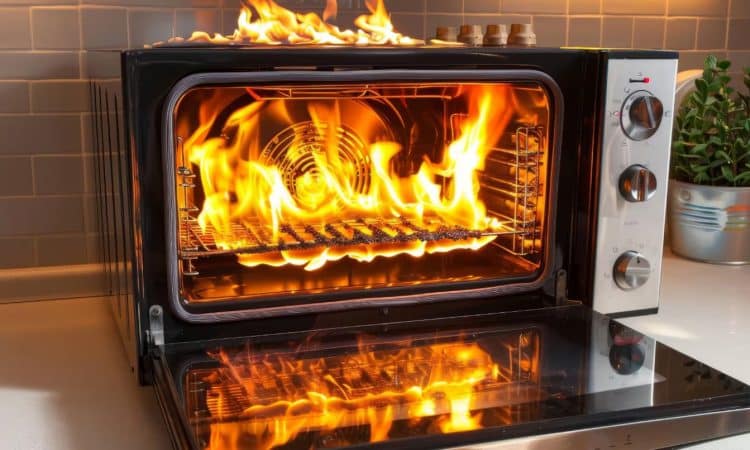
132views
It’s so lovely to see electric ovens becoming more and more popular in homes everywhere! They’re just so practical for heating food or cooking it from scratch.
However, to ensure its correct operation, safety and prolong its useful life, it is crucial to place it in the right place.
Here are six places in the kitchen where you should avoid installing an electric oven:
- Near water sources: this includes dishwashers and any place where there may be splashing or moisture. Water and electricity do not get along well, and plugging in an oven in a wet location can cause short circuits and electrocution.
- On flammable surfaces: Do not place the electric oven on wooden tables, shelves, curtains or any other material that can catch fire. The heat generated by the oven can ignite these materials, causing a fire.
- Outdoors: Electric ovens are not designed to be used outdoors. Exposure to rain, sun and other elements may damage the appliance and increase the risk of electrocution.
- In poorly ventilated locations: Electric ovens generate heat and need good ventilation to operate properly. Placing the oven in an enclosed or unventilated area can cause overheating and increase the risk of fire.
- Near combustible materials: Avoid placing the oven near gas bottles, flammable products or any other material that can easily ignite. The heat from the oven could start a chain reaction and cause an explosion.
- In locations with exposed electrical wiring: Do not plug the oven into an outlet that has damaged or exposed wires. This can cause short circuits and electrocution.
The six places where you should never plug in a microwave, according to specialists.
- Near other large appliances: Proximity to refrigerators, dishwashers or stoves can interfere with the microwave’s performance and affect its lifespan.
- Under cabinets or low shelves: the lack of free space above the microwave makes proper ventilation difficult and can cause overheating.
- Tight spaces: placing the microwave in areas that are too narrow or enclosed may prevent proper ventilation.
- Damp areas: placing it near the sink or in areas prone to liquid spills can damage electronic circuits due to excessive moisture.
- Near sensitive electronic devices: proximity to televisions, stereos or computers may interfere with their operation due to electromagnetic interference.
- On the stove top: heat and steam generated from cooking can affect microwave performance and shorten the life of the microwave.
Tips to avoid electrical problems
- Use a proper electrical outlet: be sure to connect the microwave to a location that meets the manufacturer’s specifications, preferably one that is grounded to avoid electrical shock.
- Avoid using extension cords: do not use extension cords or multiple adapters, as they can overload and cause electrical faults.
- Check the power cord: inspect the microwave power cord to make sure it is not damaged, worn or frayed.
- Do not overload the circuit: avoid connecting other power-hungry appliances on the same electrical circuit as the microwave, as this may overload it and cause power outages or fires.
- Professional installation: if additional electrical installation is necessary for the microwave, hire a professional electrician to ensure that the work is done properly and meets safety standards.
- Use voltage regulators: consider using a voltage regulator to protect the microwave from fluctuations in electrical current, especially if you live in an area with frequent power supply problems.
- Keep the area dry: make sure the area around the microwave is dry and free of moisture, as water can cause short circuits and damage the electrical components of the appliance.
- Avoid internal overloading: do not overload the microwave with large or heavy containers, as this may cause excessive power consumption and overheat the internal circuits.
- Regular cleaning: keep the equipment clean, especially in the ventilation areas, to prevent dust and grease from accumulating and causing electrical problems.
- Read the user’s manual: follow the recommendations and warnings in the user’s manual provided by the manufacturer for safe and efficient use of the microwave oven.

